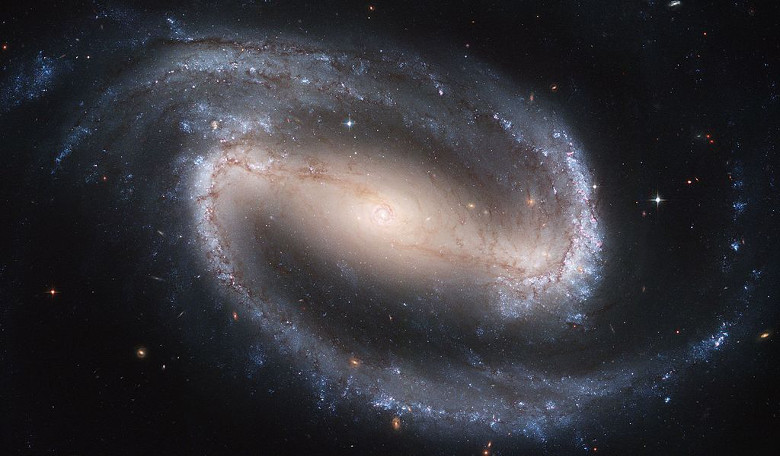Researchers have found a radial acceleration relation amongst galaxies, prompting the suggestion that a new natural law can explain the rotation of galaxies.
The relation in question is a correlation between the observed acceleration of a galaxy with the gravitational acceleration measured from its visible mass. Put more simply if an astronomer measures the distribution of normal matter, they know the rotation curve, and vice versa. A rotation curve of a galaxy is the variation in the orbital circular velocity of stars or gas clouds at different distances from the centre. How these velocities vary with radius is an indication of the distribution of mass in the galaxy.
Why does this matter? Well, as far back as the 1930s it was noticed that stars in the Solar neighbourhood moved faster than expected. However it was not until the late 1960s and early 1970s, having noticed that the same problem occurred in nearby galaxies, that the phenomenon was given a name – the galaxy rotation problem. The problem was that the motions of stars in the outskirts of the galaxy were seen as orbiting just as fast as those nearer the centre – a notion that appears to violate Newton's laws, which predicts that these outer stars should be flung away from their galaxies. To overcome this problem, researchers started to look for unseen matter to hold the galaxies together – a term that has now become infamous as ‘dark matter.’
In trying to find a solution to this problem, and building on last year's discovery that the tight correlation in the observed acceleration and gravitational acceleration existed in spiral and irregular galaxies, a team led by Case Western Reserve University, have extended their original data of 153 spiral and irregular galaxies, to include 25 ellipticals and lenticulars, and 62 dwarf spheroidals, to measure the correlation with greater precision.
"This demonstrates that we truly have a universal law for galactic systems," said Federico Lelli, formerly an astronomy postdoctoral fellow at Case Western Reserve University and currently a fellow at the European Southern Observatory, and who led this investigation.
This relation can be thought of in a similar way to Kepler’s Laws for planetary systems, which does not care whether the planet is rocky like Earth or gaseous like Jupiter; whatever its size or chemical make-up, the laws will apply regardless.
Nonetheless, although the extra data provides further support that the relation is tantamount to a new natural law, “it is still unclear what this relation means and what is its fundamental origin," added Lelli and it still challenges the current understanding of galaxy formation and evolution.
So does this new data help confirm the existence of dark matter or does it dismiss it? ”Within the standard dark-matter paradigm, this law implies that the visible matter and the dark matter must be tightly coupled in galaxies at a local level and independently on global properties. They must know about each other," Lelli said. "Within alternative models like modified gravity, this law represents a key empirical constraint and may guide theoretical physicists to build some appropriate mathematical extension of Einstein's General Relativity."
Modified gravity or MOND as it is known as, is the hypothesis of Modified Newtonian Dynamics proposed by Israeli physicist Moti Milgrom. However, others have said that the new law could relate to something in the nature of dark matter like the superfluid dark matter idea proposed by Justin Khoury.
Although the growing proof of the relation, or natural law, requires new thinking about dark matter and gravity said the team at Case Western, with plans to extend the data sets to distant galaxies just a few billion years after the big bang, those involved are hoping to learn whether the same relation holds for the lifetime of the Universe.











